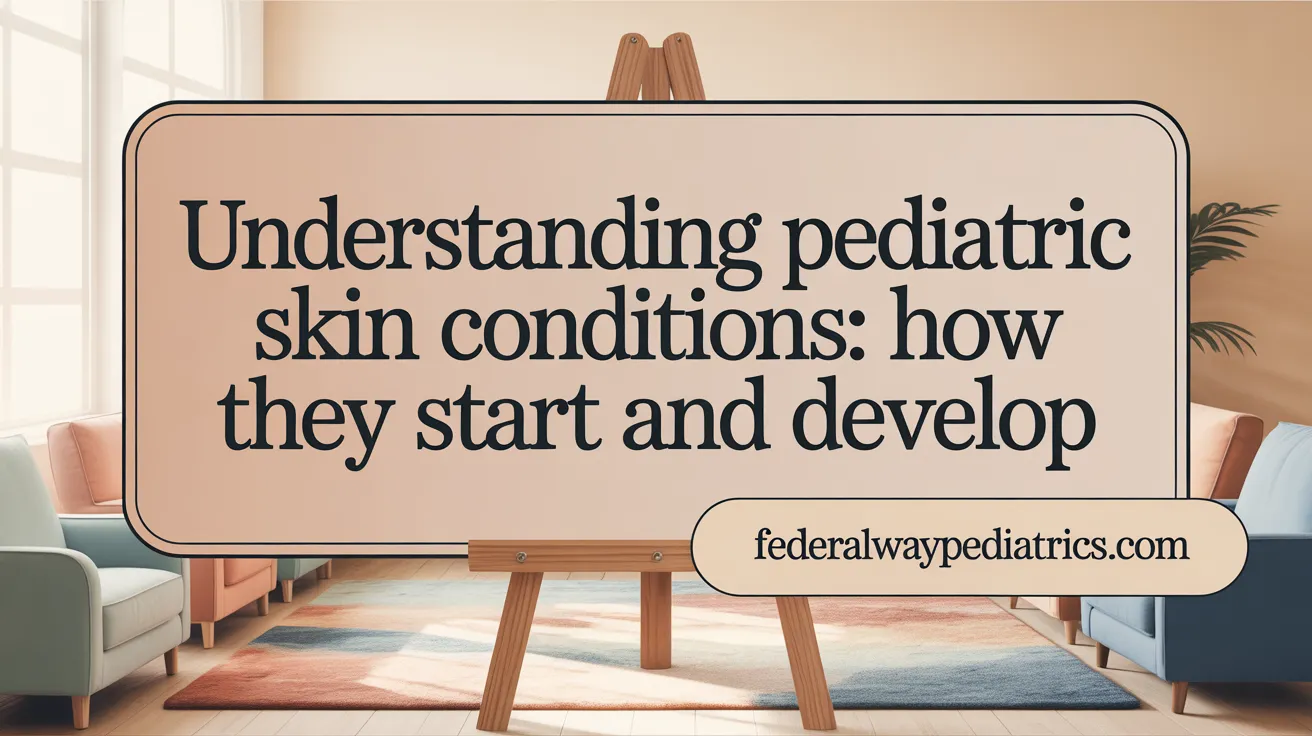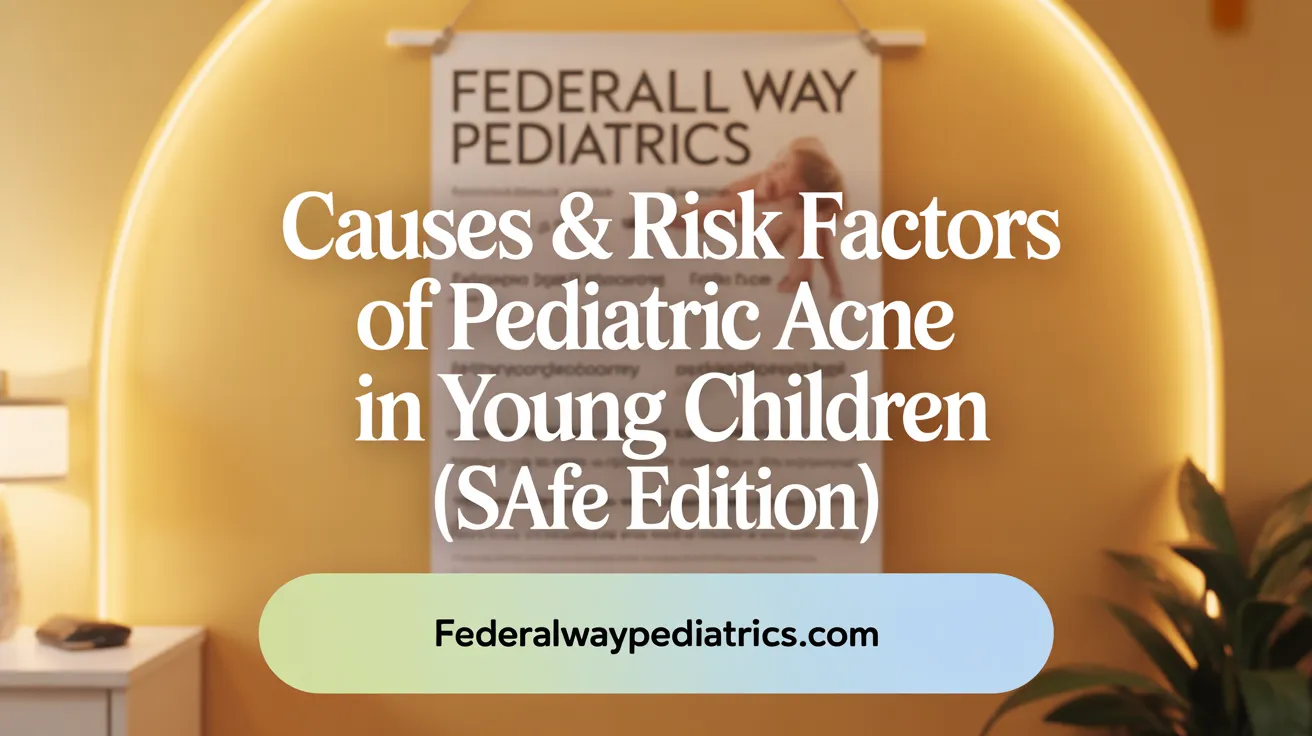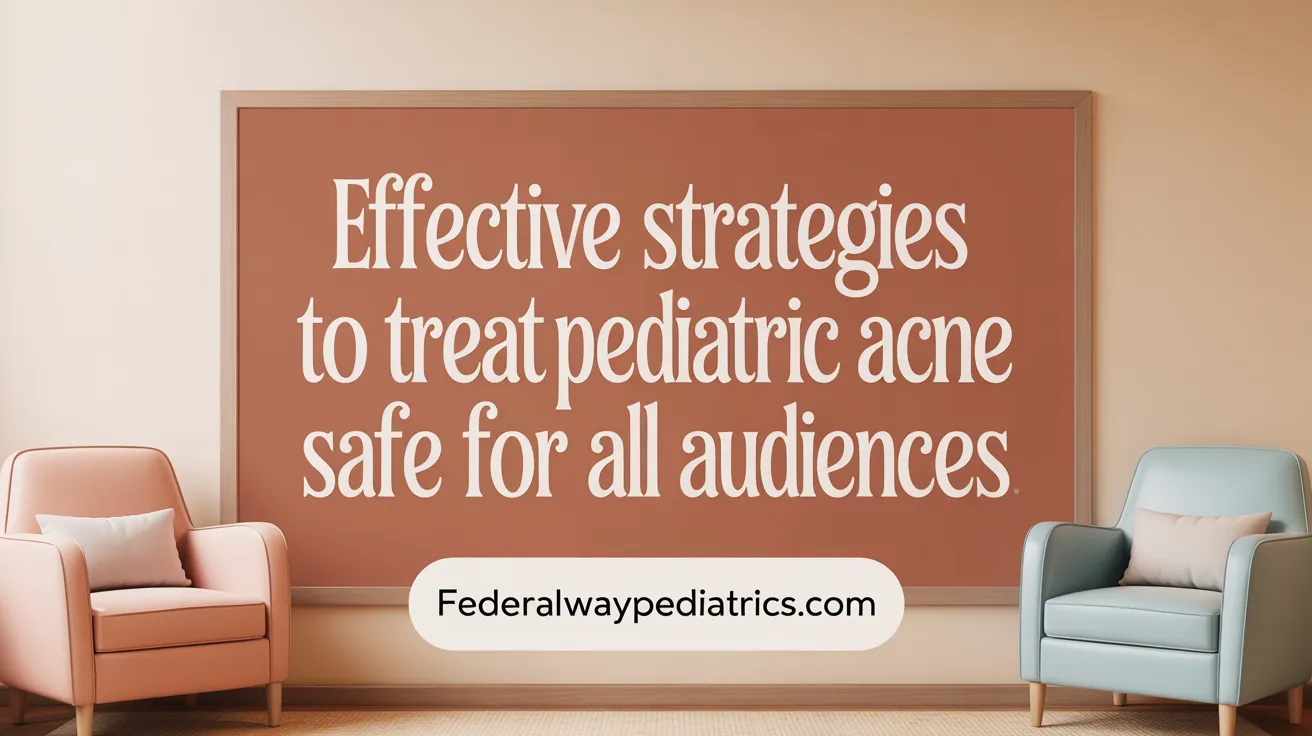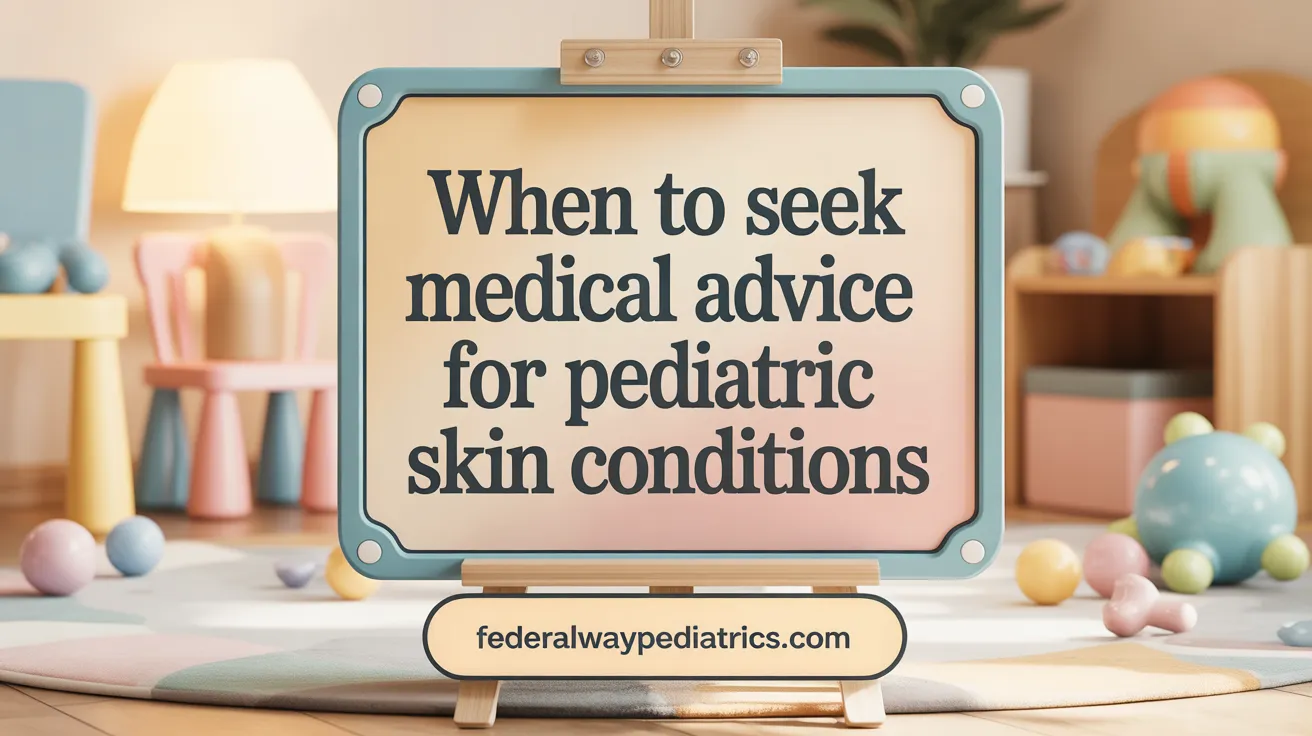What Parents Need to Know About Pediatric Acne
Pediatric acne is a common concern that affects children and adolescents at various stages of development. Understanding what causes this condition, recognizing its symptoms, and knowing effective treatment and management options can help parents and caregivers support their children through both mild breakouts and more severe cases. This article explores the nature of pediatric acne, its causes, types, and the best approaches to treatment and prevention, tailored to children of different age groups.
What Is Pediatric Acne and How Does It Develop?

What is pediatric acne and how does it develop?
Pediatric acne is a skin condition commonly seen in children and adolescents, marked by the presence of pimples, whiteheads, blackheads, cysts, and inflamed skin lesions. It arises from a combination of factors including clogged hair follicles and the overproduction of oil by sebaceous glands.
The process begins with hormonal changes that typically occur during puberty. These hormonal shifts, particularly increased androgen levels, stimulate the oil glands to produce more sebum—an oily substance that helps lubricate the skin. Excess sebum, combined with dead skin cells, can block the hair follicles, creating open or closed comedones, known as blackheads and whiteheads.
Bacteria such as Propionibacterium acnes (P. acnes) thrive in the warm, oily environment of blocked pores. Their growth causes inflammation, leading to red, tender bumps called papules, pustules, and in some cases, deep-seated cysts and nodules. This inflammatory response can lead to discomfort and increase the risk for long-term skin scarring.
Several factors can influence the likelihood and severity of pediatric acne. Genetic predisposition plays a role—children with family members who had acne are more prone. External influences like the use of greasy skin products, friction from tight clothing, or excessive sweating can aggravate breakouts. Certain medications and environmental exposures, such as pollution or humidity, also contribute.
Though it's often a temporary condition that clears with age, untreated severe cases might result in scarring or emotional impact, emphasizing the importance of proper skin care and medical management. Treatments range from gentle cleansing routines and topical medications to oral antibiotics or other prescribed therapies, aimed at reducing sebum, bacteria, and inflammation.
Causes and Risk Factors of Pediatric Acne in Younger Children

What are the common causes of pediatric acne in children between 4 to 12 years old?
Pediatric acne in children aged 4 to 12 often results from a combination of hormonal, genetic, environmental, and medication-related factors. One of the main causes is hormonal changes, particularly during adrenarche, which is the early onset of puberty characterized by increased androgen levels. These hormones stimulate the sebaceous glands to produce more oil, leading to clogged pores and acne formation.
Genetics also play a crucial role. Children with a family history of acne are more predisposed to developing the condition, indicating a hereditary component. Environmental influences, such as exposure to pollution, oily skin products, and excessive sweating, can further promote pore clogging and inflammation.
Medication use is another important factor. Certain drugs, including corticosteroids, lithium, and some anticonvulsants, are known to induce or worsen acne in children. These medications can alter hormone levels or increase oil production, contributing to the development of acne.
In some cases, persistent or early-onset acne may signal underlying endocrine abnormalities. Therefore, it's vital for healthcare providers to consider endocrine evaluation, especially if the acne appears unusually early or is severe. Proper diagnosis helps to identify any hormonal imbalance or other health issues that may require specific treatment.
This multifaceted etiology underscores the importance of a thorough medical assessment to determine the underlying causes in young children presenting with acne, ensuring appropriate management and minimizing the risk of scarring or other complications.
Types and Symptoms of Pediatric Acne Across Different Age Groups

What are the different types and symptoms of pediatric acne?
Pediatric acne can be categorized based on the child's age and clinical features, including neonatal, infantile, mid-childhood, and preadolescent acne. Each type presents with distinct characteristics but shares common lesions such as comedones (whiteheads and blackheads), papules, pustules, nodules, and cysts.
Lesions often appear as small bumps accompanied by redness, swelling, and sometimes pain. Darker pigmentation or post-inflammatory hyperpigmentation can follow healing. The affected areas are usually rich in oil glands, like the face, chest, upper back, shoulders, and neck.
The causes include hormonal changes during puberty, increased sebum secretion, bacterial proliferation (notably Cutibacterium acnes), and skin irritation. Recognizing early signs and starting appropriate treatment can help prevent scarring and emotional impact.
How does pediatric acne present differently in various age groups, such as toddlers versus prepubertal children?
Pediatric acne varies significantly across different age brackets:
- Neonatal acne (birth to 6 weeks): Mostly mild, with small, red or purple papules and pustules on the cheeks, forehead, and chin. It generally resolves on its own within a few weeks, posing little risk of scarring.
- Infantile acne (6 weeks to 16 months): Tends to be more severe, featuring comedones, papules, pustules, and sometimes nodules or scars. It often affects the cheeks and chin and may require treatment if persistent.
- Mid-childhood acne (1 to 7 years): Causes are usually linked to endocrine abnormalities like hyperandrogenism. Clinical presentation is rare but can include inflammatory papules and pustules on the face.
- Preadolescent acne (7-12 years): Similar to adolescent acne, with comedones and inflammatory lesions primarily in the T-zone. Its severity can range from mild to severe and often indicates the start of hormonal changes from adrenarche.
Understanding these differences assists healthcare providers in diagnosis and management, aiming to reduce the risk of scarring and emotional distress.
Effective Treatment Strategies for Pediatric Acne

What are the recommended treatment options for pediatric acne?
Managing acne in children and teenagers involves a personalized approach that depends on the severity of the condition and the patient's age. Early and appropriate treatment is essential to prevent scarring and reduce the emotional impact of acne.
For mild cases, usually characterized by blackheads and whiteheads, over-the-counter (OTC) treatments are recommended as the first step. These typically include topical agents such as benzoyl peroxide and salicylic acid, which help to reduce bacteria, unclog pores, and diminish inflammation.
When acne is moderate, doctors often prescribe topical retinoids like adapalene or tretinoin. These help normalize keratinization in hair follicles, preventing the formation of microcomedones.
More severe or resistant cases might require systemic therapy. Oral antibiotics such as doxycycline or minocycline are used to reduce bacterial load and inflammation; however, their use is typically limited to children over 12 years due to potential side effects.
Hormonal therapies, especially for pubertal females, can be effective. Oral contraceptives and medications like spironolactone can help modulate hormonal fluctuations that trigger increased oil production.
In cases where other treatments fail or the acne is particularly severe or cystic, isotretinoin is prescribed. This powerful medication drastically reduces sebum production and inflammation but requires careful monitoring due to possible side effects, including teratogenicity.
Why is adherence and medical supervision crucial?
Consistent application of treatments as prescribed enhances effectiveness. Regular follow-ups with healthcare providers are vital to monitor response, manage side effects, and adjust therapies as needed.
Understanding resistance is important, especially with the use of antibiotics, which should be used judiciously to prevent resistant bacterial strains.
Overall, the goal is to control acne effectively while minimizing side effects and resistance. This balanced approach ensures better skin health and reduces psychological impacts associated with acne.
Home Care and Prevention Tips for Managing Pediatric Acne
Managing pediatric acne involves simple and consistent skincare practices along with healthy lifestyle choices. Daily gentle cleansing routines are essential; washing the child's face twice a day with a mild, non-comedogenic cleanser helps remove excess oil, dirt, and dead skin cells without irritating the skin. It's important to avoid scrubbing or using harsh products that can cause further irritation.
Avoiding irritants and harsh skincare products is crucial. Select oil-free, fragrance-free, and non-comedogenic products for your child's skin. Encourage your child not to pick or squeeze pimples, as this can worsen inflammation and lead to scarring. Protecting skin from environmental triggers such as pollution, humidity, and contact with greasy or dirty objects helps reduce breakouts.
Lifestyle adjustments can make a significant difference. Promoting a balanced diet low in refined sugars and processed foods may help improve skin health. Ensuring adequate hydration and encouraging good sleep habits support overall skin function. Managing stress through relaxation techniques and maintaining a regular sleep schedule can also help prevent flare-ups.
Using non-comedogenic skin products is recommended to prevent pore blockages. Additionally, sun protection with broad-spectrum sunscreen shields skin from harmful UV rays, which can worsen post-acne marks and discoloration. Wearing loose, breathable clothing and avoiding tight garments reduce friction and sweating against the skin, helping decrease irritation.
Are there natural or home treatment options for pediatric acne in children aged 10 to 12?
While there are no fully natural cures for pediatric acne, gentle approaches can help manage mild cases. Maintaining good skincare habits, such as regular gentle cleansing and avoiding aggressive scrubs, helps prevent irritation. Some parents consider natural remedies like tea tree oil, which has antimicrobial properties, but it should be used cautiously and diluted properly to avoid skin irritation. Promoting a healthy lifestyle—including enough sleep, stress reduction, a balanced diet, and adequate water intake—can support skin health.
How can pediatric acne be prevented or managed effectively?
Effective prevention includes consistent skin care: washing twice daily with a gentle, non-comedogenic cleanser, avoiding picking or squeezing pimples, and using oil-free skincare products. Lifestyle modifications like wearing loose clothing, avoiding greasy cosmetics, and protecting skin from excessive humidity are beneficial. For persistent moderate acne, over-the-counter treatments like benzoyl peroxide or topical retinoids may be suitable. In severe cases, medical treatments prescribed by a healthcare professional, such as antibiotics or hormonal therapy, may be necessary.
Early intervention and regular follow-up with a pediatrician or dermatologist help tailor treatments, prevent scarring, and address emotional impacts. Combining proper skin care, healthy habits, and appropriate medical therapy when needed offers the best chance for effective management of pediatric acne.
When to Consult Healthcare Professionals for Pediatric Acne
 Parents should seek medical advice for their child's pediatric acne if it is severe, persistent, or worsening despite using over-the-counter treatments. Severely inflamed or cystic lesions, especially in infants or very young children, require evaluation by a specialist. Persistent acne lasting beyond a few weeks, or that causes ongoing redness and discomfort, also warrants professional consultation.
Parents should seek medical advice for their child's pediatric acne if it is severe, persistent, or worsening despite using over-the-counter treatments. Severely inflamed or cystic lesions, especially in infants or very young children, require evaluation by a specialist. Persistent acne lasting beyond a few weeks, or that causes ongoing redness and discomfort, also warrants professional consultation.
Additionally, signs of hormonal or endocrine disorders—such as early or delayed puberty, abnormal hair growth, or other systemic symptoms—should prompt a healthcare visit. These underlying conditions can sometimes contribute to or worsen acne and need appropriate testing and management.
The psychosocial impact of acne should not be underestimated; if the condition is affecting the child's self-esteem, causing emotional distress, or leading to scarring, early intervention by a pediatrician or dermatologist can help mitigate long-term effects.
Typically, pediatricians or dermatologists are involved in diagnosing and treating pediatric acne. They can prescribe suitable medications and recommend skincare routines tailored to the child's age and specific severity.
Early diagnosis and personalized care are essential to prevent scarring, reduce inflammation, and address any underlying hormonal issues, ensuring better skin health and emotional well-being for the child.
Supporting Children Through Pediatric Acne
Pediatric acne is a multifaceted condition affecting many children and adolescents, influenced by hormonal changes, genetics, environment, and lifestyle. Early recognition and understanding of its types, causes, and symptoms enable effective management tailored to each child’s needs. Combining good skincare practices, appropriate use of medications, and healthy lifestyle choices forms the cornerstone of successful treatment and prevention. Parents and caregivers should be vigilant for signs warranting medical consultation to minimize complications such as scarring and emotional distress. With informed care and professional guidance, pediatric acne can be managed constructively, helping children maintain healthy skin and confidence during critical stages of growth.
References
- Understanding Acne in Teenagers and Kids: Causes, Treatment ...
- Teen Acne: How to Treat & Prevent This Common Skin Condition
- Acne: Causes and Treatment - Nationwide Children's Hospital
- Acne Vulgaris in Children and Adolescents: What's the Cause and ...
- Acne | Causes, Symptoms & Treatment - Cincinnati Children's Hospital
- Acne Vulgaris in the Pediatric Patient - AAP Publications
- Baby Acne: Causes & Treatments - Cleveland Clinic
- Acne in Children | Children's Hospital of Philadelphia
- Acne in Children and Teens - Kids Central Pediatrics
